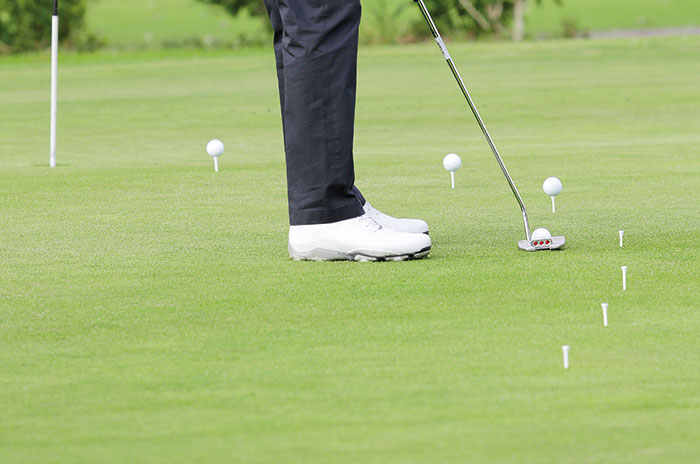By Grant Hepburn
We’ve all been there before – you’re at the practice range and your mate asks you for a little help with his game. This series of tips helps you find the quick solutions to some of golf’s most common ailments. This month Grant Hepburn looks at some of the reasons behind your mate’s putting problems.
It’s no secret that putting makes up than 40 percent of all golf shots, and of course many of these are short putts. The secret to being a really good putter is not only making plenty of putts, but ensuring that your misses are not by too much. In other words, your short putts are really short – not the horrible three- to four-footers that are so easily missable. Every foot counts when it comes to putting, so to avoid the dreaded three-putt, you want to get the ball to tap-in distance at worst.
Longer putts
Controlling your speed is crucial to successful putting, along with the ability to read a green and visualise the putt. Of course, speed affects the line of the putt, with a putt that is too slow likely to miss on the low side and a putt that is too firm missing on the high side.
This drill is an excellent way to learn how to read greens better and to visualise a medium- to long putt – taking into account where the turning points are. Once your eye gets used to seeing the route that the ball takes to the hole on a curving putt it becomes easier to understand and read the break in the greens.
Set up with balls along the line of a breaking putt, as I have done. Now putt along the curved line of the balls at a speed that will get the ball to travel to the hole – or just past if it misses. Putt each ball in turn, as this will help you learn how the strength of the putt changes at different distances. It’s also a great drill for helping you get used to putting away from the hole and allowing the slope of the green to curve the ball towards the cup.
Shorter putts
Shorter putts often cause the most anxiety in golfers. They know they should be making the putt, but are afraid they will miss it, so they tense up and make critical errors that lead to problems with their technique. Here are two common faults that cause you to miss the shorter putts.
Overactive wrists
If you allow the right wrist to be too active, it will induce too much power into the putt and that will get the ball rolling too fast to be able to drop into the hole. An overactive wrist can also cause you to open or close in the putterface and thus affect accuracy.
Have a look at the angle at the back of my right wrist. That same angle should be there after I have hit the putt, indicating that I have kept all wrist action out of the stroke – instead I have used the rocking of the shoulders to propel the putter. If you see your friend changing this angle through the putt, then you know that they are going to be less consistent from close range as their wrists are too active.
Note to designers: please draw in a (V-shaped) line in colour behind Grant’s wrist to show how the angle stays the same throughout the stroke. Then we need another to show how the angles are lost in the incorrect stroke.
Head movement
We often hear how important it is to keep the head still in golf. I don’t believe that it is vital in the full swing, but it certainly is when it comes to short putts.
For many ammies, the tendency is to peep early at the hole to see if the ball has gone in. When this happens, you will end up, most times, seeing the putt go past the hole instead of into it.
You see, when you move your head, it causes your whole upper half of the body to move and that throws out the path of the putting stroke. The stroke will be off line and so will the ball.
Watch for any head movement by your mate by picking a point of reference behind their head, such as a tree, and check to see if their head remains in the same place in relation to the tree until after the ball has got to the hole. A good tip is to listen for the ball to drop into the hole rather than to watch it dropping into the hole.
Although feel plays a large role in putting, particularly in the longer putts, there is no doubt that getting the basics right is a great way to begin improving on the greens. And it was the great golf instructor Harvey Penick who wrote, ‘I say touch can be learned. I don’t say touch can be taught. The way you learn touch is by practice. There is no other way.’








